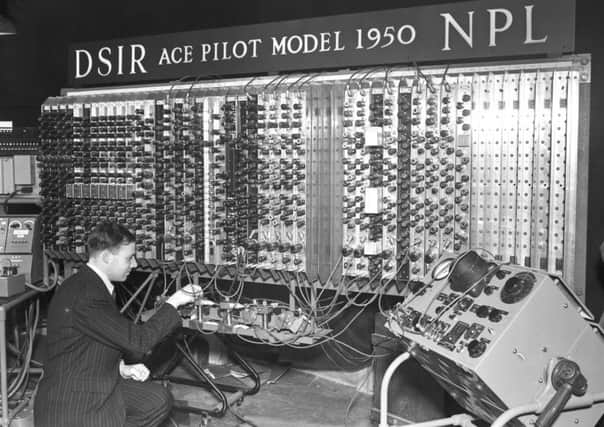Book review: The Cryotron Files, by Iain Dey and Douglas Buck


In terms of the thriller-esque aspects of the book, the answer is inconclusive. Correlation does not equate to causation, and coincidence does not equal conspiracy. The Buck who comes across in the book was a pretty reckless and haphazard character at times. He had a penchant for practical jokes, sometimes with awkward outcomes, and on one occasion his laboratory blew up. He may have been precise in terms of letting people know about his secret services – his own sister thought he was on “camping trips” when he was dispatched to East Germany to try to convince another computer engineer to defect – but his work in the office seems to have been a combination of fiddling, muddling, making do, making fit and getting round problems rather than solving them. In this respect – and I write as the son of an engineer – he was more of an engineer than a scientist. Exuberant, obviously charming, and of interest to the governments of both the American and the Soviet regimes, he was, so to say, “handy”. Leave it to Richard Feynman and Murray Gell-Mann to deal with the confusing quantum stuff: Buck was the person who could test, test and re-test different metals to see if they would power his “cryotron”.
Computing was the white heat on the front line of the Cold War. What mattered most was not who had the most uranium, but who could develop a device that could calculate trajectories and vectors with the most precision. Buck’s legacy, in some ways, is in realising that computers could do multiple things at the same time; the Soviet problem was they were creating machines with a single purpose. Stalin loathed computers, as they would put workers out of jobs. Uncle Joe seems to have been pretty prescient in that regard at least. But the major question both sides faced was processing speed. Nowadays we don’t bat an eyelid at getting our Google results in the blink of an eye; but then it was not just a technical quandary but a political necessity. Buck had managed quite extraordinary results using rare metals, but the problem was they had to be cooled to extraordinary levels – close to absolute zero – to be functional. Silicon would eventually win the race over Buck’s liquid-helium, rare-metal super-conductors. But at the time, the technologies were nose-to-nose. Indeed Buck’s public profile and stint of lectures indicated that the freezing cryotron was the future. His public profile, the authors suggest, would make him a target of KGB assassination.
Advertisement
Hide AdBut the man himself remains brilliantly enigmatic. For example, he adopted a child he met through Scout Camp, and managed to persuade his sister to act as the mother in this arrangement. He went on to become married and have his own children, but one wonders at this act. A piece of genuinely Christian charity towards a kid in danger of going off the rails? A lack of love to a child who was sent off to his grandmother when his own mother was in St Elizabeth’s, the psychiatric institution that at the same time would have been holding the poet Ezra Pound? What was it that made Buck want to fix things – not just transistors and circuits, but human beings?
As a technologist, Buck made huge steps in computing, but also in the flash drive, how one searches large amounts of data, as well as radar, user-interface and other fields. Towards the end of the book, a former Nasa administrator is recorded as saying “How the hell do you know about that?”, referring to the cryotrons and their later iteration as Josephson Junctions, when raised at a dinner, typically, in Abu Dhabi.
This is a timely book given how big-tech and politics are ever more intersected. A largely forgotten figure seems to have been a prophet of how computing, intelligence (both personal and the dark glasses kind), threat and innovation might coalesce. Lucidly written, and obviously researched with care as well as persistence, it is a model for how popular science books can be influential. - STUART KELLY
The Cryotron Files, by Iain Dey and Douglas Buck, with research by Alan Dewey, Icon Books, £20